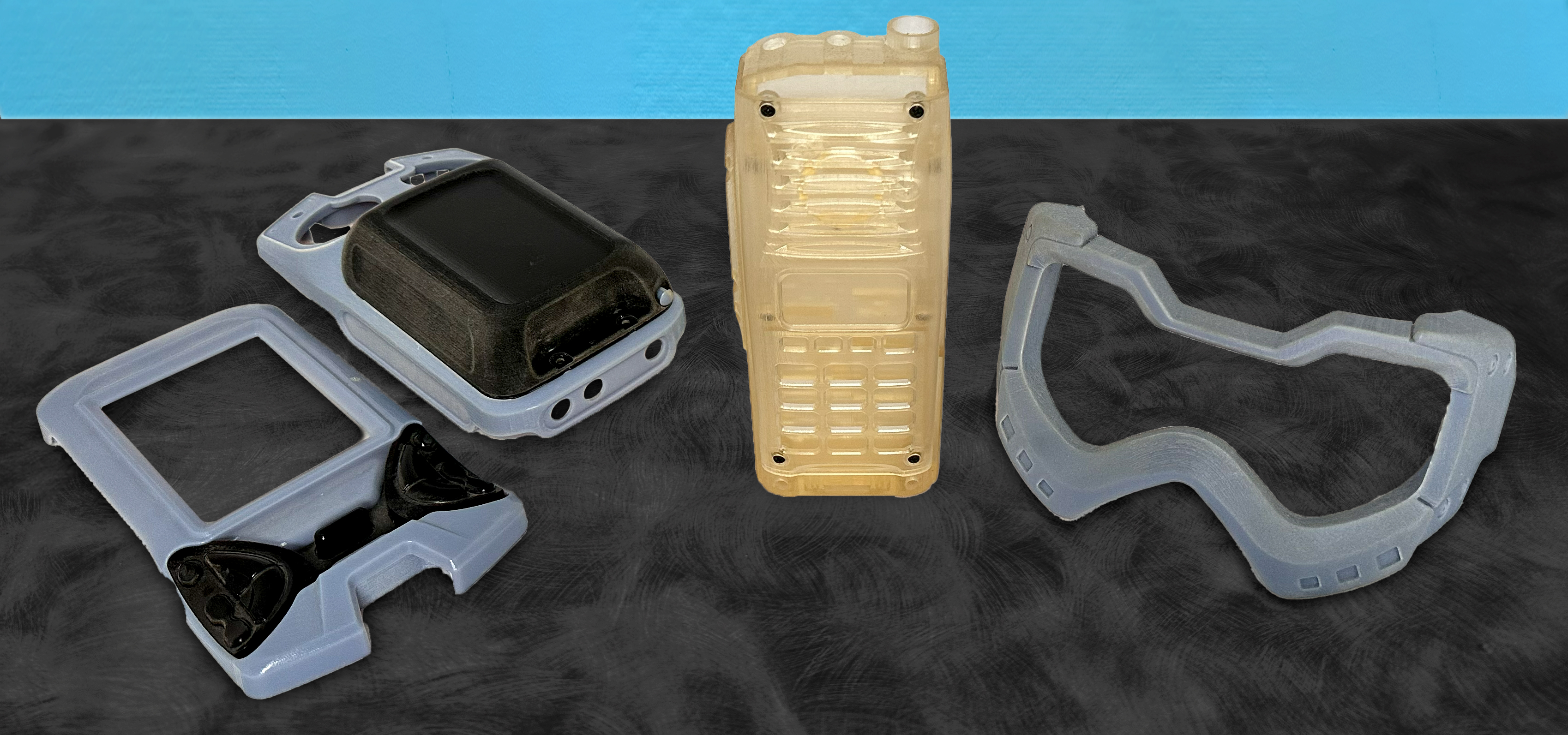Tangents
Unlocking the Power of 3D Printing in Product Development
by Marshall Bronfin

Rapid Prototyping: Accelerating Innovation
One of the most outstanding contributions of 3D printing to product development is its capability to facilitate rapid prototyping. Unlike traditional prototyping methods, which can be both time-consuming and cost-intensive, 3D printing empowers the designers and engineers at Helix to swiftly transform digital designs into physical prototypes.
At Helix, we consider 3D printing a fundamental component of our product development cycle, significantly expediting the development process.
We rely on a versatile array of 3D printing technologies, including Polyjet, MJF, SLA, FDM, and more. Each step of our product development process is enhanced by selecting the most suitable 3D printing technology from our toolkit to ensure the creation of the most valuable prototypes at the right time during development.
Iterative Design: Perfecting the Vision
With 3D printing, our designers and engineers can easily iterate on 3D models and generate new prototypes without experiencing significant downtime. While the initial phase often involves foam modeling at Helix to explore form and function, as we progress in the development journey, 3D printing becomes indispensable for refining and fine-tuning designs with precision. In a recent program involving a handheld scanner, we created over 50 prototypes throughout the development cycle. Each prototype played a pivotal role in refining and informing the evolution of the product. Multiple prototypes were meticulously created at each stage to ensure that all stakeholders remained actively engaged in the development process.
Multiple prototypes were meticulously created at each stage to ensure that all stakeholders remained actively engaged in the development process.
Functional Prototypes: Bridging the Gap Between Vision and Reality
3D printing opens the door to the creation of functional prototypes that serve as indispensable tools for testing and validating product performance. At Helix, we have harnessed the power of 3D printing to provide our clients with a tangible, hands-on experience with their products. A recent example involved the development of a gas leak detection device designed to mount on a UTV (Utility Terrain Vehicle).
By 3D printing custom mounting parts and directly installing them onto the UTV, we gained immediate insights into how the product would be used, enabling us to optimize it for future development.
Conclusion: A New Era of Innovation
The emergence of 3D printing has ushered in a new era of product development, fundamentally transforming how companies conceive, prototype, and manufacture their products. As 3D printing technology continues to advance, its pivotal role in product development will continue to grow, igniting innovation and pushing the boundaries of what can be achieved in the realms of design and product development.
At Helix, we remain committed to harnessing the full potential of 3D printing to confront and overcome your product development challenges head-on. Together, we will continue to leverage this transformative technology to breathe life into your ideas and maintain our position at the forefront of innovation.
About Helix Design
Helix Design is an industrial design firm and product design company that delivers creative design and mechanical engineering solutions to companies who need external perspectives combined with practical experience. For samples of our recent work, please visit our industrial design portfolio.
Do you need industrial design guidance for your next project?
Contact us for an assessment today.


